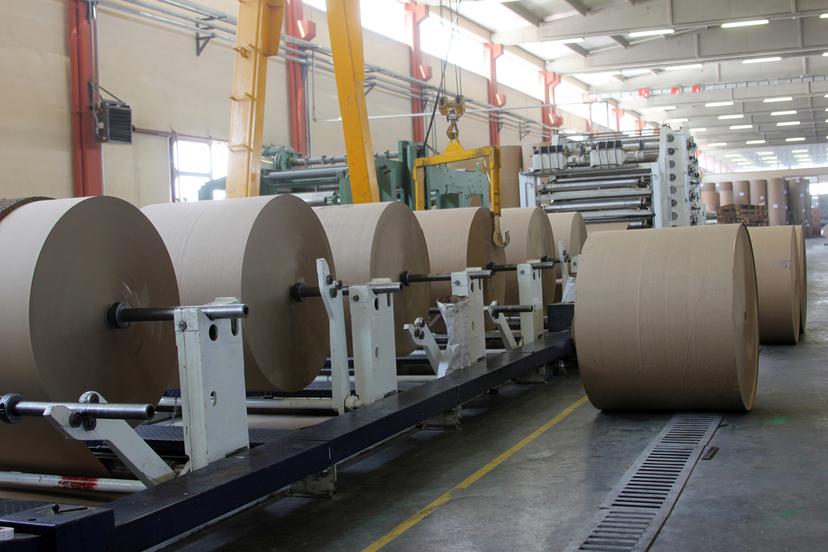Pulp and Paper

Industry Outlook
Most of the pulp and paper industry's products are consumer oriented, and thus its economic outlook is tied very closely to the overall health of the U.S. economy. Because exports have accounted for a sizable percentage of the industry's growth in shipments since the early 2000s, the global economy is key to the outlook of the pulp and paper industry.
The market research organization IBISWorld reported in 2021 that the value of the U.S. paper mills industry was $30.9 billion, comprised of 235 businesses. A 1.8 percent decline in revenue was anticipated for 2021, and a 7.6 percent annual decline in market size growth was estimated for 2016 through 2021. The industry had been struggling leading up to the coronavirus pandemic, which started in Wuhan, China, in 2019. The business lockdowns, social distancing requirements, and economic slowdown in 2020, triggered by the pandemic, further impacted the pulp and paper industry. There was growth in demand for packaging and sanitary paper products early in the pandemic, but the industry still experienced significant revenue loss. The rollout of the COVID-19 vaccine in 2021 will bolster the economy, but the paper industry will continue to decline through 2026. The research group IBISworld predicts that temporary relief for the industry may stem from macroeconomic improvements in the coming years, as corporate profit and consumer spending recover. The specialty pulp market, on the other hand, is expected to grow quickly from 2021 through 2026. According to a MarketWatch article, the market had been growing at a steady rate and "with the rising adoption of strategies by key players, the market is expected to rise over the projected horizon."
The U.S. Department of Labor reports that approximately 362,100 people work in the paper industry; the American Forest and Paper Association reports a higher figure of 374,600 people employed in the pulp and paper industry. Common jobs in the industry as reported by the DOL are paper goods machine setters, operators, and tenders. Overall employment in paper manufacturing is forecast to decline by as much as 18.7 percent through 2028, according to the Bureau of Labor Statistics.
Jobs in the pulp and paper industry have been steadily declining at a slow rate over the past several years and this decline continued through the first decade of the 21st century. This is mainly due to increased computerization of papermaking processes, which results in the need for fewer workers to oversee operations. However, paper and paper products are in high demand both domestically and abroad. U.S. paper manufacturers have been increasing exports as a result of the North American Free Trade Agreement (NAFTA), the General Agreement on Tariffs and Trade (GATT), and other trade regulations. Many companies are expected to enter the international marketplace as general paper and paperboard producers, however, which will create intense competition between already-established U.S. manufacturers and the new arrivals. Another result of the internationalism of the industry continues to be increased competition from foreign companies within the American market. Thus, although there will be jobs in this industry for many years to come, workers with computer and other technical skills will have better chances of landing jobs in this increasingly competitive field.
One of the industry's greatest challenges over the years has been addressing environmental issues. Waste disposal and water pollution are major concerns for paper manufacturers, and during the past two decades, the industry has sharply reduced the volume of pollutants—airborne, waterborne, and solids—to comply with federal and state environmental regulations. In the late 1990s, the Environmental Protection Agency established Cluster Rules, the first attempt to combine water and air regulation for one industry. These rules, designed to reduce the amount of toxic water pollutants and air emissions by the primary pulp, paper, and paperboard industries, revised the water effluent and air emission standards. As a result of these rules, employment opportunities for researchers in wastewater management, emissions control, waste recycling, and energy recovery should be good.
The paper industry is also concentrating on the problem of how to dispose of its products after use and is rapidly increasing its ability to use recovered paper in the papermaking process. In the coming years, the paper industry will continue to make huge investments in new mills, in maintaining existing mills at worldwide competitive standards, in maintaining renewable forest reserves, and in expanding its use of recoverable paper.
The increased automation and computerization of the industry is creating more opportunities for process engineers, computer scientists, and technicians in these fields, but decreasing the need for other employees by performing much of the work previously done manually. As the automation trend continues over the long term, hiring will primarily center on replacing workers who have left the industry or retired. Expanding IT departments will continue to present the most opportunities, as will the need for environmentalists and foresters.
At the corporate and managerial levels, the industry offers a wide variety of opportunities for office workers, accountants, market researchers, sales managers, and salespeople, as well as for the many other professionals needed to run a major corporation. With the international expansion of the industry, more positions in sales and marketing may be created. In addition, the push for new product development at many paper companies may translate into more product management and marketing positions.
